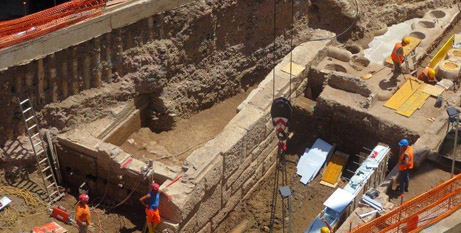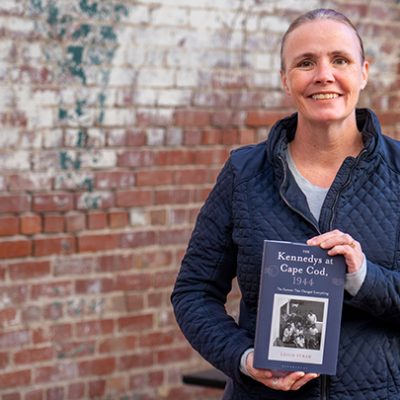
Excavations on Vatican Radio’s doorstep have uncovered significant remains, some dating as far back as the first half of the 1st century AD, including the remains of a portico overlooking the Tiber and large gardens belonging to Emperor Caligula. Source: Vatican News.
A luxurious garden facing the Tiber River has been unearthed in the area designated for an underpass for the 2025 Jubilee. The garden is bordered by a massive, terraced wall made of squared travertine blocks, running parallel to the river. Alongside this wall are the brick foundations of a colonaded portico.
Following the discovery of a well-preserved fullonica (laundry) from the second half of the 2nd century AD, featuring complete sections such as dolia (large “decapitated” jars used as washing basins) and three rinsing basins, the excavation, led by the Special Superintendence of Rome under Daniela Porro, with field coordination by archaeologist Dora Cirone and scientific direction by Alessio De Cristofaro, has documented three other building phases, from the Augustan age to that of Nero.
Among the findings, a particularly significant one is a fragment of a lead water pipe (fistula aquaria), inscribed with the name “C(ai) Caesaris Aug(usti) Germanici,” identifying Caligula, who was emperor from 37 to 41 AD, as the owner. This allowed the experts to name the proprietor of the water supply system and date the first construction phase of this complex.
The inscription is crucial for other reasons as well, noted Mr De Cristofaro, as it indicates that this area was part of the Horti (garden) of Agrippina the Elder, Caligula’s mother. In the last century, the discovery of other lead pipes at Piazza Pia inscribed with the name “Iulia Augusta,” likely referring to Livia Drusilla, Augustus’ second wife and Germanicus’ grandmother, suggests that the villa was a family inheritance passed down through the Augustan line to Caligula.
Among the sophisticated finds are several Campana Plaques from the first half of the 1st century, reused to cover later drains. These are terracotta reliefs, made using moulds, depicting heraldic and mythological scenes that originally decorated a roof.
FULL STORY
Hidden wonders: Archaeological finds on Vatican Radio’s doorstep (By Maria Milvia Morciano, Vatican News)






